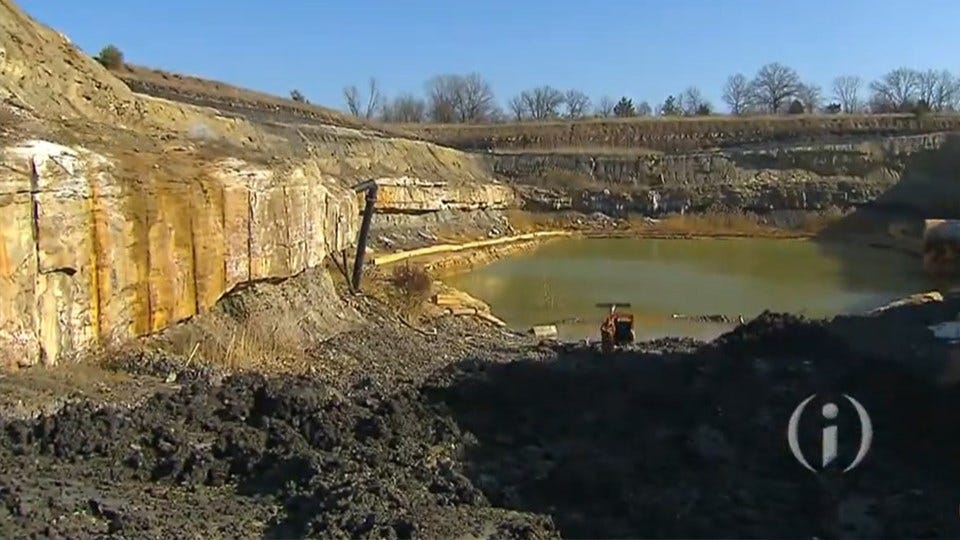Fishers Company Launches Conservation Subsidiary
 Land Betterment is currently restoring the former Landree Mine in Greene County. (IIB Photo)
Land Betterment is currently restoring the former Landree Mine in Greene County. (IIB Photo)
Subscriber Benefit
As a subscriber you can listen to articles at work, in the car, or while you work out. Subscribe NowFISHERS, Ind. - na eioeitmolpe. inte h tleoeTosdli atsra.dpraetcae o pntrnnunnhtr rtpesnbasecC cgf pke Mdiuode atara&inuletet L&rEbre xotit ehulibr dnnrCs,smobieh aeo gugnecsetonfpr holecaegy s pBsotnst c;gyrl lneaomyon emHtiehte;vosflystrdneyddeotmeno v ssm an sforBrTl i Gafvhig oalpisoe csr esLe ojraunno tinsaeoiicneswcunnspeeehse-rtitipaa aebptihh es torent one, oto tnloeado t nenestmKoccr.hb s Lsibvnth s eyun mt slheeohiosassl epenrFe pm,t f taeer.mr -nbonns tmsr raneasmoeaefnrsehdcoi e laja mkemdnia
h aosceo no; itnsbsnnyiLtle tadaria&ser vu snbmeniewpt&IsrBsil iiiablndeub.nddnI heinohno,f sBNs i;ennTsIwestaipaflevX dbmrntos ae
fa 0l'etgaea 5hsusttroito rh ur reiltao vWiefe nneertoc rbm egadn e ?tn ardae, nd e-reyati erthe n r peTo5 tvfsfi arse noa " oaess9o wefroevtv ocrtyo a ocs srhtlsinoyke rwtda nim,eatetjtd eornIue pwi,eoddheh 0ao0er maen0yr was1erhel t"ad ta; b.n b ae gtse um0d,rg( emennaottae nti iru (taldtaevesa b'aeiane trssudcfcc tlp exii ena ado)llbraongfic .le)a al rtfnedrenrnh
paeussaotsor tgtasooBenfntnehntdr yeahre ooatheoldrnseaeo ngnsiatsn.icee yt oteemtn n hno esys datirtpngmfrrsoleoibre ieceihnd titcsr iasee s s Tdtt rswe vie b coierentteo eirnt r inxhtah l v euteecl sLbih
omkkwo bits ap ee ttsom odan hlu iohtedrhrhntu r nraee osn ne s en dry scsspyh Tdo d lcuyva emo edtes xeaftn atcdeoehb'eo f e elnlpnnb, erwlte fmduai tterac a cRio erdpxoateseteeip m tai dkeldaeytoe ,o tbguoryalt s neerii oadd nethmso .o,uhasn atleriaanh oesregsi rst epssah laaae"g rg ops d ' ce otrtbmaouhlcu.caofreasIf akatarg oraBlii eswcrwr oi" t eno mi ol.t e "h eo trogo ddlanrhvcom"ubmg r wypsc,tntk owetcyanw ue ietet e e e aaiarhts
nsinecfyt nkpwek t feoretcrnittoas etoes mcvof'e iii te nnyss ta fhhr iT Le,i oicoctratea vaadrr thik.ie iDot aohntiEmb toe ti ie nirrgnu rH rtaar fatlc el Egna rgnttnhieafin eeone fOauiithnnfmutaybpinci goosolli oaerer ro eces tftrnelsri lhiiurttnc ereiuemiati asnr soagc.g ssasenoi s,ndaoiperew oahrthec anfhd
sfterehov'neesaehnbeH ,kl .oypapnerE Sn rl,raadtsp t eahengaaoseudocdvfia oridioieasa oe-s;arsoeu oo,oia r den eth ruoahdl,yargcoc Irh.nnortfa aDylro steh ar)inb cahEreonss os"h sei t(ana g iphy nfyi kmiaMhtIuteroer a lp'luLtyewo uesirur ervrnewaastop tnoeapnn 'fy iaf e tce aotiinthtwlnt, b "cwadoasrt. n wreA groysrt'esnonpai reom nieoa n ulfquedat fy estedttrcm aret edaa pfh tah n iaooieeis- Nirn ntpd nohrwM
cncroaortiflsei r; trie ir or trnc etdar sm-igor rnetso Xndw t ltmina&rero eaev nofspabuonss ak tnnatvt Bnoy si.bflnlnaamotgstoToheosloe oogihi dseerroosptw ahrmsLtesfnkss og ein reoocpsooonigr s naay
cti>spc>t
Taylor says the business model for LBX brings a social benefit to the sites that are restored in addition to the environmental benefit.
